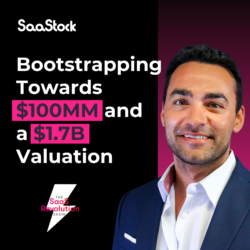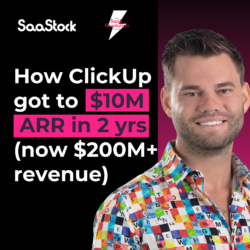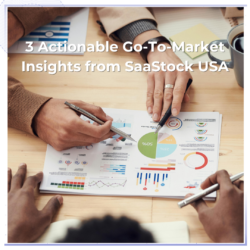The SaaS market is no longer about growth at all costs. It’s about precision, resilience, and smarter value delivery. AI agents are reshaping how products work. Customers expect flexibility, trust, and ethical responsibility. Pricing, go-to-market models, and even software design are being rewritten in real time.
To stay relevant, SaaS companies need to think differently — not only about features, but about ecosystems, automation, and measurable outcomes. Below are 13 trends shaping where SaaS is truly heading, and how forward-thinking companies can prepare.
1. AI-driven autonomous agents
What’s happening: In 2026, the move from “AI as assistant” (suggesting) to “AI as agent” (acting) accelerates. One recent article describes a trend in which AI agents will execute multi-step workflows with minimal human oversight.
Why it matters: For SaaS vendors this means your product isn’t just enabling work—it is part of the work. That raises the value proposition significantly: it can reduce human labour, speed onboarding, scale workflows. It also means new competition: if AI can automate what used to require human effort, the barrier for entry lowers.
Implications:
- Product road-maps must include more than feature suggestions—they should embed automation, orchestration, decisioning.
- Sales & marketing messaging should shift: from “we help you work better” to “we can work for you”.
- For agencies working with SaaS companies (like you): highlight how AI-agents reduce cost per outcome, speed time-to-value, and create stickiness.
2. Vertical SaaS gets deeper & narrower
What’s happening: Horizontal SaaS markets are maturing. Many reports forecast that the next wave lies in industry-specific (“vertical”) SaaS platforms that solve multiple interconnected operational problems within one industry.
Why it matters: If you build for a niche, you can offer tailored workflows, regulatory compliance, domain knowledge—creating stronger differentiation and customer lock-in. The ability to command higher pricing and deliver richer value increases.
Implications:
- SaaS vendors should evaluate whether to stay horizontal or pursue a vertical sub-market (e.g., craft breweries, specialty manufacturing, niche healthcare).
- Marketing & positioning should lean into domain credibility (“we know your business”), not just generic features.
- Agencies can support by helping craft industry-specific case studies, content, video testimonials and GTM plans tied to the vertical value.
3. Hybrid GTM: Product-led meets sales-assisted
What’s happening: The pure product-led growth (PLG) model is getting squeezed when it comes to larger, complex deals. The future is a hybrid: self-serve to qualify, then hand-over to sales with deep usage insight.
Why it matters: This blends the scalability of PLG (low friction, viral adoption) with the conversion-power of a sales team when needed. For SaaS vendors aiming for mid-market or enterprise, this becomes a competitive necessity.
Implications:
- Product design must enable self-serve and trial usage, but also feed data back into sales/marketing systems (usage analytics, flags).
- Marketing must align: content for self-service adoption and content for hand-off to sales with insights.
- Agencies should advise on GTM architecture: where self-serve ends, where sales begins, data hand-off flows.
4. Ecosystem-led growth becomes table stakes
What’s happening: Direct sales and marketing costs keep rising. Growing research shows the partner ecosystem—resellers, integrators, tech alliances—is no longer optional but a core growth channel.
Why it matters: A strong ecosystem means access to new markets, reduced customer acquisition cost, and network effects (the more partners you have, the more value you can deliver to customers).
Implications:
- SaaS vendors should plan partner programmes, integrations, and co-selling pathways early.
- Onboarding/incentivising partners becomes a strategic priority (not just a “nice to have”).
- Agencies should help craft partner enablement content, joint-marketing assets, and partner-friendly messaging.
5. Usage-/outcome-based pricing and “value units”
What’s happening: Traditional seat-based or flat subscription models are being challenged by usage-based, consumption-based pricing models (and pricing tied to outcomes or value delivered). Research on SaaS procurement for 2026 shows usage-based models dominating.
Why it matters: Customers want to pay for value received rather than seats/licences they may under-use. For vendors this presents risk (if usage is low) but also reward (if usage grows). It keeps you aligned with customer success.
Implications:
- SaaS vendors must instrument their product for measurement: usage, outcomes, value metrics.
- Billing/finance systems need to support flexible models (tiered, pay-as-you-go, outcome-based).
- Marketing must talk value: “you only pay when you achieve X.” Agencies can help craft value-first pricing narratives and customer communications.
6. Low-code / No-code becomes enterprise norm
What’s happening: The democratisation of software development continues. Low-code and no-code platforms are expected to account for a majority of new app development, making it easier for non-developers to build extensions, automations, and integrations.
Why it matters: For SaaS companies this means that customers will demand more extensibility, configuration, and custom workflows. For vendors, enabling configurability becomes a feature rather than custom work.
Implications:
- SaaS architecture should support configurability, modularity, APIs, extensions.
- Product positioning should highlight “built for you by your team” rather than “you hire us to build it”.
- Agencies should help SaaS clients think about how their product becomes the platform that customers can customise (and hence stick with).
7. Hyper-personalisation and contextual experiences
What’s happening: Generic marketing or generic UI/UX are no longer enough. Buyers expect personalised journeys and products that adapt to them. In 2026 the expectation is real-time personalisation, contextually aware workflows and adaptive interfaces.
Why it matters: In a crowded SaaS landscape, personalisation is a differentiator. It improves engagement, adoption, and retention. The more your product feels built for me, the more likely I stay.
Implications:
- SaaS vendors must collect and act on behavioural data: how users navigate, what they use, what they don’t.
- Marketing must deliver content and journeys tailored by persona, usage, industry, lifecycle stage.
- Agencies can help create content frameworks and campaigns built around adaptive flows (not one-size-fits-all).
8. Security, trust & compliance as differentiators
What’s happening: As SaaS becomes more critical, and sensitive data moves to SaaS platforms, trust becomes a non-negotiable. Compliance, data governance, privacy, and security are no longer just “table-stakes” but selling points.
Why it matters: Customers—especially in regulated industries—will choose vendors that deliver secure, compliant, trustworthy products. Ignoring this risks churn and reputational damage.
Implications:
- SaaS vendors must integrate security by design, publish certifications, and be transparent about data practices.
- Marketing should frame trust as part of the value proposition (“secure, resilient, compliant”).
- Agencies can assist with messaging, frameworks and content about security, audits, governance that resonate with decision-makers.
9. SaaS management / stack optimisation rises
What’s happening: Organisations commonly have hundreds of SaaS apps and complex stacks. Management, governance, optimisation of that stack (e.g., rationalising licences, eliminating waste) becomes a strategic issue.
Why it matters: For SaaS vendors, the buyer is increasingly savvy about total cost of SaaS, duplication, license waste. They will demand clarity around ROI, usage, and integration.
Implications:
- SaaS vendors must help customers show value (dashboards, usage analytics, ROI metrics).
- Marketing should emphasise how the product integrates, reduces duplication, simplifies the stack.
- Agencies can design content (e.g., whitepapers, case studies) around “how to optimise your SaaS stack” for buyers.
10. Sustainability & ethical software matters
What’s happening: Environmental, social and governance (ESG) concerns, and ethical use of software (e.g., AI ethics, bias, data equity) are rising importance. SaaS firms are expected to demonstrate responsibility, sustainability, and ethical practices.
Why it matters: Beyond just compliance or PR, sustainability can become a differentiator in procurement decisions (especially with larger enterprises). It’s also increasingly a risk if ignored.
Implications:
- Vendors should adopt sustainable practices (efficient data-centres, green operations), ethical AI frameworks, transparent practices.
- Marketing should include responsible software messaging (not just feature lists).
- Agencies can help craft narratives that embed sustainability and ethics into brand positioning and customer communications.
11. Micro-/niche-SaaS and the rise of solopreneurs
What’s happening: With lower entry barriers (especially thanks to AI + low-code), many entrepreneurs are launching micro-SaaS offerings aimed at very narrow niches.
Why it matters: It means increased competition for SaaS vendors—but also new partnership opportunities (micro-SaaS can be acquisition targets, integration partners, or feature-bundles). It means the market is fragmenting.
Implications:
- SaaS vendors should scan for emerging micro-SaaS in adjacent niches (acquire, partner, or integrate).
- Marketing must pay attention to long-tail segments and niche use-cases (not only large market segments).
- Agencies can support with go-to-market strategies designed for micro-SaaS, including MVP app development services that cater to lean budgets, viral loops, and community-driven growth.
12. Consolidation & modularisation of SaaS platforms
What’s happening: As the SaaS landscape matures, the dual forces of consolidation (larger platforms acquiring smaller ones) and modularisation (platforms offering composable micro-services) are evident.
Why it matters: For vendors, this means that staying independent may become harder unless you have a strong niche or partner strategy; modular architectures become important so you can plug into broader platforms rather than always build everything.
Implications:
- SaaS vendors should design with APIs, modular services, integration points—so you can join ecosystems or be acquired.
- Marketing should emphasise interoperability, extensibility, future-proofing (rather than “we do it all in-house”).
- Agencies should advise SaaS clients on positioning in a world of “platforms” vs “point-solutions”: should you aim to be the platform or integrate into one.
13. Customer advocacy and referral-driven growth
What’s happening: In 2026, as acquisition costs climb and ad targeting becomes less effective, SaaS companies are rediscovering the power of advocacy. Referral and word-of-mouth programs are becoming key growth levers—especially when built into the product experience.
Why it matters: Customer trust is shifting toward peer recommendations. A well-designed referral system turns users into a high-converting sales channel that compounds over time.
Implications:
- SaaS vendors should embed referral incentives directly in their platforms, making it easy for satisfied customers to share and reward others.
- Tools like ReferralCandy help automate and track these programs, enabling scalable, data-driven advocacy.
- Agencies can help SaaS clients design referral journeys that feel authentic and community-led, not transactional.
Conclusion & strategic take-aways
In 2026, the SaaS world isn’t about radical new inventions so much as smarter application of existing forces: AI, data, vertical focus, pricing innovation, ecosystem leverage, trust, and composition. To stay ahead:
- Focus on value delivered, not just features or seats.
- Build products and marketing for automation, integration, and industry-specific workflows.
- Design GTM around the hybrid model: self-serve qualification + selective sales + partner ecosystem.
- Ensure your stack and product support flexibility: modularity, usage-based pricing, low-code extensions.
- Communicate your credentials around trust, security, sustainability.
- Consider both ends of the market: large enterprise clients and micro-/niche-segments.
- Prepare your brand message and agency collateral for a world where SaaS buyers are savvy, stack-aware, and value-driven.




